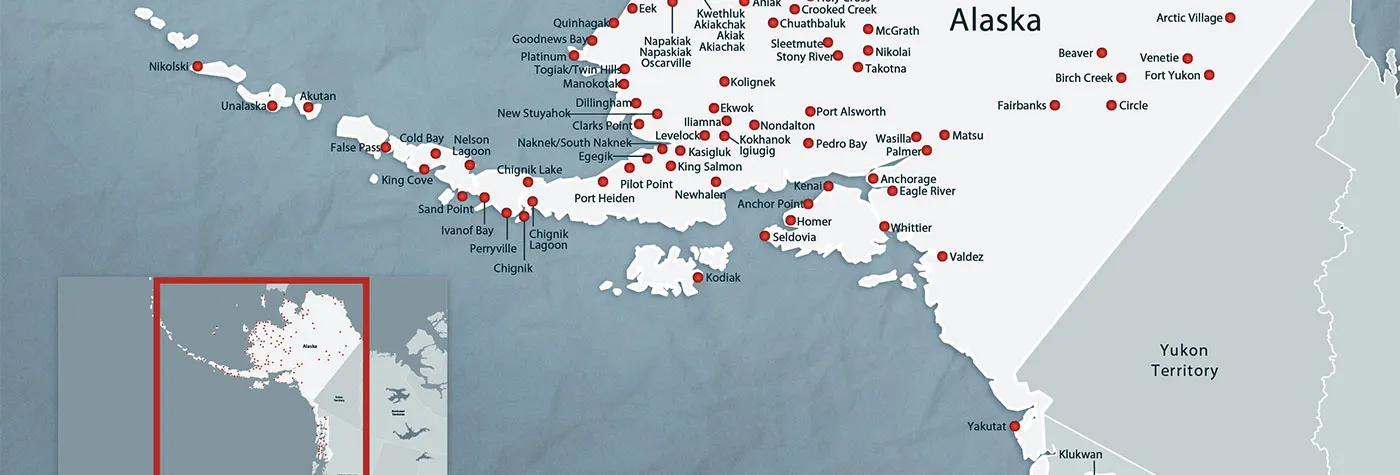For city and suburban dwellers, receiving medical treatment at a healthcare facility is an easy task that we take for granted. We have hospitals nearby, doctor’s offices and urgent care clinics within an hour from our homes, and ambulances have no problem reaching us within a reasonable timeframe. But for those who dwell in rural and remote areas of the country, gaining access to medical care is a challenge. This is where high-speed internet and a strong telehealth program can make all the difference.
We’ve previously covered the efforts of GCI, Alaska’s largest internet service provider, to improve aspects of Alaskan life by increasing internet speeds and connectivity. Thanks to GCI’s services, many Alaskans now have access to quality education, and business owners and entrepreneurs have greater opportunities to expand their business. On top of this, internet connectivity has advanced healthcare in Alaska, making access to medical care easier and more reliable.
GCI Healthcare’s ConnectMD private meet-me network is a telehealth program that connects over 250 healthcare facilities, hospitals and clinics supporting telehealth for Alaskans who live beyond reach of the state’s major hubs. GCI has built this endeavor over the past 17 years, investing $300 million to provide critical services including internet connectivity, video conferencing, security and privacy support, and additional measures to transform telehealth into just “health” — a normal part of everyday business, explained Joe Furrer, director of GCI Healthcare. And it’s built in a way that makes collaboration easy among healthcare facilities across the state.
“What GCI got right is that they brought in people that understood healthcare, the security requirements and the business. They built a network that handles healthcare from beginning to end,” said Furrer. “We facilitate the transition of care electronically through our network for our customers [the healthcare providers], for their patients, essentially from the most remote of places to the large hubs.” Furrer described the network as “worry-free,” given the security compliances it follows to keep patient data private, and one that was built to simulate how patients travel in Alaska. For context, it’s helpful to know how the healthcare system in Alaska generally works. When a resident in a remote village in Alaska needs medical treatment, the first thing the patient does is visit the village clinic. In some villages, where the population is less than 200 people, the community health aide on call is likely a friend or relative. This public health official acts as the first line of defense, but does not have the equivalent medical preparation of a doctor. Keep in mind that there is no police force, fire department, or ambulance in these villages. Patients find their own way to the village facilities.
If the community health aide is unable to treat the medical condition, the patient then flies to one of the regional hospitals, as there is no way to drive in and out of these villages. In the deep wintertime, weather could even pose an obstacle to flight. This is where the village clinic steps in with its connection to the telehealth network. “Here’s the importance of having this clinic with a community health aide who has access to specialists through the telehealth network. It’s often the most immediate connection and the best way to contact emergency response and the only way to get immediate help,” said Heather Handyside, director of communications for GCI.
The way the telehealth system works, as Furrer described it, is just like how patients would normally use the healthcare system, but without having to physically leave their village. The village connects to regional hubs when medical treatment cannot be provided locally, or taps into specialty centers in other areas of the state, or into Anchorage. “Video is definitely huge,” said Furrer, referring to role that video conferencing plays in telehealth. Patients have access to this healthcare collaborative, ensuring that they can see a regular doctor or specialist any day of the week. This is a pretty incredible feat, given the shortage of medical providers and the lack of highly-skilled practitioners across remote areas of the state, and the fact that this technology was not available 10 years ago.
One of the largest differences that the telehealth network has made in the state is the reduction in patient travel costs. The system has saved patients hundreds of thousands of dollars a year, Furrer explained. This has especially proven beneficial for patients with chronic conditions. Imagine having to fly out of town every week for a check-up. With the telehealth network, patients get access to medical care from doctors and facilities elsewhere in the state through advanced video conferencing.
But aside from savings in travel costs, health providers in Alaska have discovered the telehealth network provides people with more comfort and security. Traveling to and staying in one of the state hubs or in Anchorage can be a jarring cultural experience. “People feel so much better receiving care in their own communities, especially elders, and recover more quickly because they are with people who love them, they have their traditional food, they are with things that are familiar to them,” explained Handyside.
Over the last 17 years, GCI’s telehealth services have gone from simple electronic communication, such as phone calls and emails, to experiencing advancements in bandwidth, technology, and the adoption of cloud services, and allowing for the advent of video telehealth. Furrer also elaborated that GCI looks to expand its healthcare services in the future by adding remote patient monitoring services that measure glucose, monitor blood pressure, look for signs of heart failure, hypertension, diabetes, and more.
Telehealth has become routine in Alaska, just like GCI hoped it would be when it first set out to turn telehealth in the state to just “health.”
“Now, there’s virtually nothing we can’t do,” said Furrer.










